Knowledge co-production, VGI and the implications on future transport systems Maria Attard
advertisement
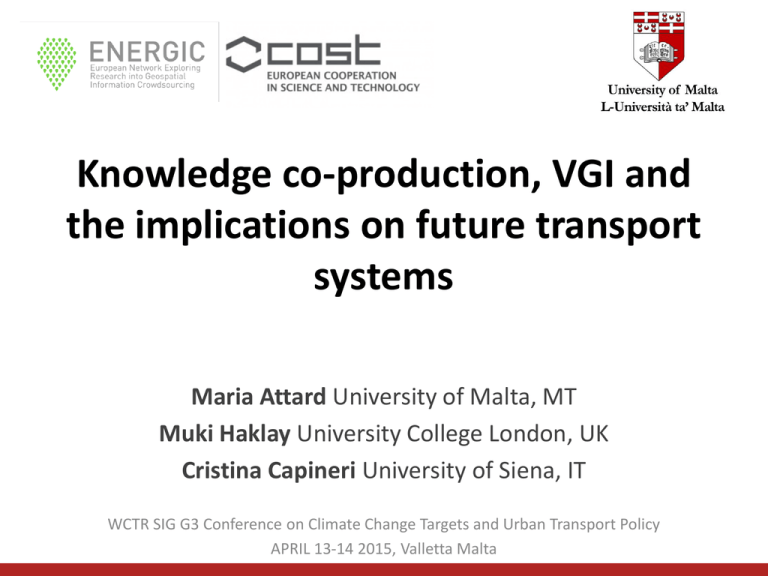
Knowledge co-production, VGI and the implications on future transport systems Maria Attard University of Malta, MT Muki Haklay University College London, UK Cristina Capineri University of Siena, IT WCTR SIG G3 Conference on Climate Change Targets and Urban Transport Policy APRIL 13-14 2015, Valletta Malta COST Action IC1203 ENERGIC Short Term Scientific Mission ECOST-STSM-IC1203-260814-047797 APPLICANT: PROF. MARIA ATTARD Institute for Climate Change and Sustainable Development and Department of Geography, Faculty of Arts, University of Malta, Malta HOST: PROF. MUKI HAKLAY Department of Civil, Environmental and Geomatic Engineering, Faculty of Engineering Science, University College London (UCL), UK Background to the research - The capacity of the transport system to support the growing mobility needs of populations have been pushed to the limit in most cities. - Miller (2013) contends the need to identify new capabilities (instead of capacity) of the transport infrastructure in order to increase efficiency and increase capacity without extending the existing infrastructure. The potential of information • Kenyon & Lyons (2003) described the potential of information to influence travel choices. • Both the transport industry and the research community supported this thesis with many cities developing multimodal information systems to support sustainability-oriented decisions (Kramers, 2014). Today’s technology • Today the potential of information is not only to be integrated across different modes but also be user generated, real time and available on smart phones anywhere. • User generated information play an important role in sectors such as politics, businesses and entertainment, and presumably this phenomena would extend to transport in revealing people’s preferences for mobility (Gal-Tzur et al., 2014). Today’s technology • Widespread smart phone technology and availability and coverage of data communication networks in urban areas are causing a dramatic transformation in the way information is produced and consumed (Manovich, 2009). • It has also offered new opportunities for what are termed cooperative transport systems. • Moovit for transit planning (www.moovitapp.com) • Community car sharing programmes like Zipcar (www.zipcar.co.uk) • Peer-to-peer vehicle and ride sharing systems like Getaround (www.getaround.com) and Uber (www.uber.com) • Waze (www.waze.com) bought by Google for $1.3 billion Lanzendorf (2014) branded these as Mobility 2.0. A new field of research Winter et al. (2011) called for a new interdisciplinary field Computational Transport Science, defined as a science concerned with the study of transport systems where: – systems monitor and interpret traffic (e.g. crowdsourcing to monitor events); – people interact with information systems (e.g. interfaces for driver assistance, or integrated transport information); or – systems manage the traffic (e.g., control of traffic flow at traffic lights, or toll management). How is this interesting? • The impact on the traveller and the potential of governments to use crowd-sourced information and social media effectively for: – sharing information, – creating opportunities for collaboration, – enhancing government responsiveness, – planning and governance to achieve sustainability and climate change goals (see also Panagiotopoulos et al., 2014; Bertot et al., 2012). Objectives of the research (i) the impact of technologies on travellers, particularly the information that is co-produced through crowdsourcing and VGI techniques (ii) its potential for supporting and achieving sustainable mobility goals, and (iii) what role exists for governments (if any at all) in the use of user generated information. maria.attard@um.edu.mt ANY QUESTIONS?
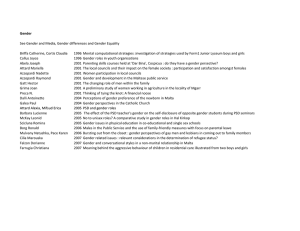

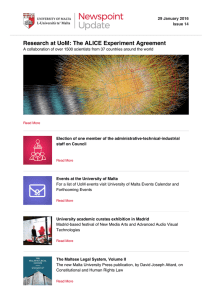
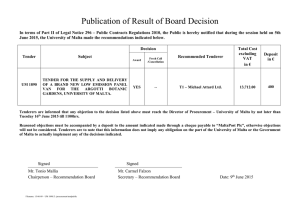

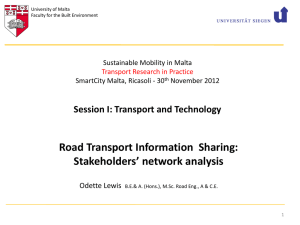
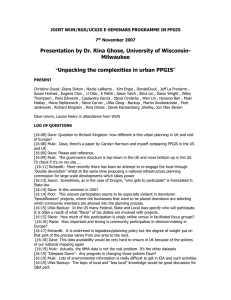
![arXiv:1508.00837v2 [cs.SI] 27 Apr 2016](http://s2.studylib.net/store/data/018725056_1-2df6d5a398de3f63ba3375893ecd9b4f-300x300.png)